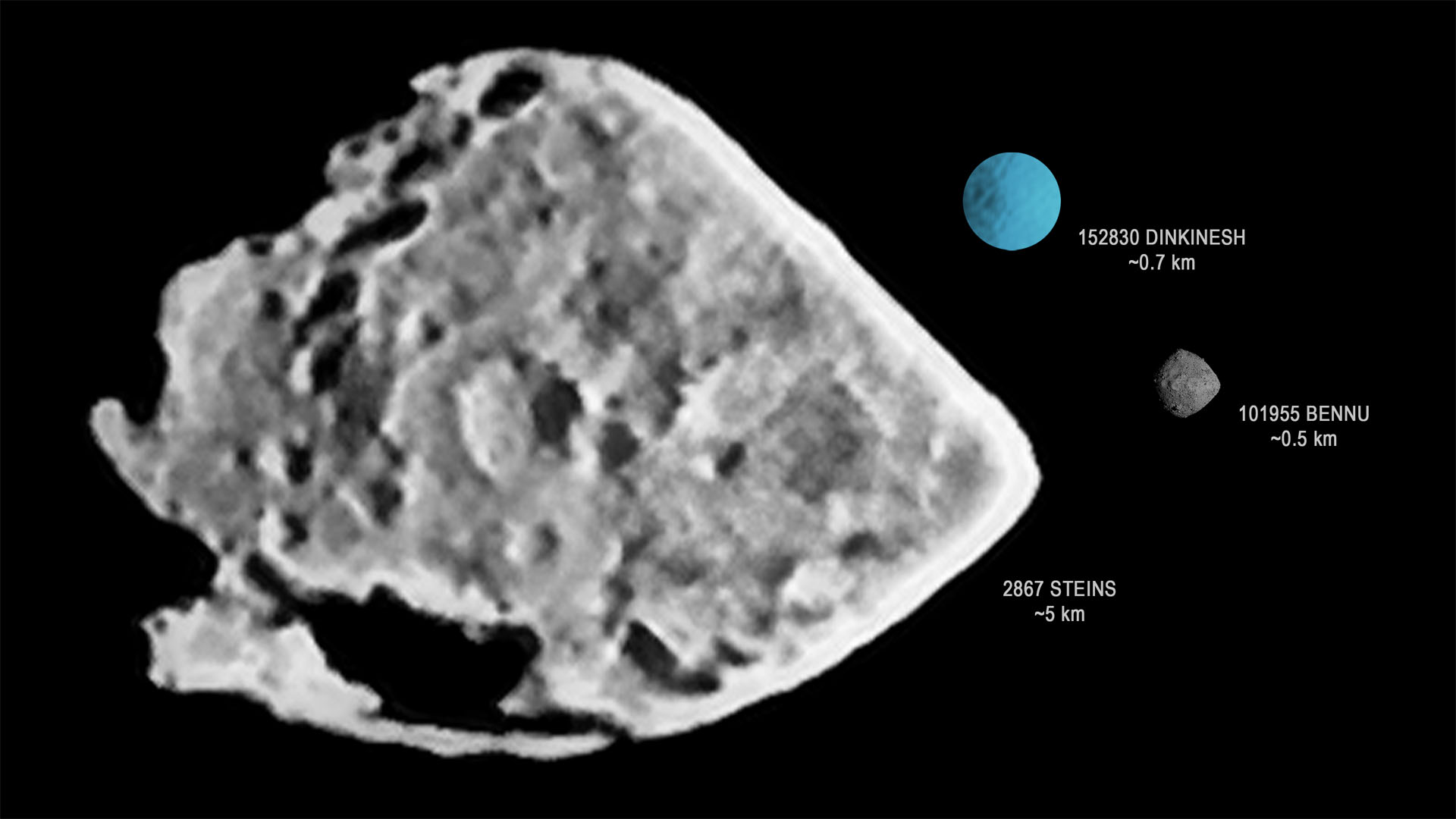Meet Dinkinesh: Asteroid targeted by NASA's Lucy spacecraft gets a marvelous name
Meet "Dinkinesh," the tiny main belt asteroid that will be visited by the Lucy spacecraft in November this year.

The first asteroid to be visited by NASA's space rock-hopping craft Lucy has finally been given a name. The tiny asteroid in the main asteroid belt located between Mars and Jupiter has received the moniker "Dinkinesh" or ድንቅነሽ in Amharic, the language of Ethiopia, which means "you are marvelous."
Dinkinesh was discovered in 1999, but like millions of other main-belt asteroids, it didn't get a name, only receiving a designation number when its orbit was well determined. First known under its provisional designation as 1999 VD57, the asteroid later entered catalogs as 152830. A proper name was only proposed when the rock was selected as a target for NASA's Lucy mission.
Evolution enthusiasts may recognize the name Dinkinesh as it is the alternative name of the fossilized Australopithecus afarensis skeleton known as "Lucy", which was discovered in 1974 in Ethiopia.
Related: Chinese asteroid-detection system enters new phase of construction
"This mission was named for Lucy because just as that fossil revolutionized our understanding of human evolution, we expect this mission to revolutionize our understanding of the origin and evolution of our solar system," Lucy project scientist at NASA's Goddard Space Flight Center Keith Noll, said in a statement. "We are excited to have another opportunity to honor that connection."
Dinkinesh will be first up in a packed tour for the Lucy spacecraft when it reaches the tiny asteroid on Nov. 1, 2023. The space rock wasn't originally part of the 12-year tour that will see the spacecraft visit nine other asteroids and was only added in January.
Dinkinesh was added to Lucy's itinerary because the spacecraft's operators think that the tiny asteroid can be used to test the probe's innovative terminal tracking system. The system will allow Lucy to precisely image the asteroids it encounters as it passes by them at high speeds.
Get the Space.com Newsletter
Breaking space news, the latest updates on rocket launches, skywatching events and more!
The fact that Dinkinesh is under half a mile (under a kilometer) in diameter means it will provide an excellent test of Lucy's high-speed imaging capabilities before the spacecraft starts its main science mission of investigating the never-before-explored Jupiter Trojan asteroids.
This large group of asteroids shares the orbit of Jupiter, the solar system's largest planet. Astronomers believe that these Trojan asteroids are fossilized remnants of the material that formed the planets of the solar system over 4.5 billion years ago.
"This is really a tiny little asteroid," Hal Levison, a planetary scientist at Southwest Research Institute (SwRI) and Lucy's principal investigator, said about Dinkinesh in the statement. "Some of the team affectionately refer to it as 'Dinky.' But, for a small asteroid, we expect it to be a big help for the Lucy mission."
The visit to Dinkinesh won't be just a test of Lucy's instrumentation. Researchers are also excited about what they can learn from the asteroid itself, which will be the smallest main asteroid belt object ever explored by a space probe.
In terms of size, Dinkinesh is actually more like a near-Earth asteroid than a main-belt object, as these tend to be bigger. Astronomers hope that the rock could help them discover how asteroids change as they leave their position between Jupiter and Mars and head closer to our planet.
"At closest approach, if all goes smoothly, we expect Dinkinesh to be 100s of pixels across as seen from Lucy's sharpest imager," Simone Marchi, a senior research scientist at SwRI, said in the statement. "While we won't be able to see all the details of the surface, even the general shape may indicate whether near-Earth asteroids — which originate in the main belt — change significantly once they enter near-Earth space."
That means, just as the Lucy skeleton proved revolutionary to our understanding of human evolution, Dinkinesh could be viral in our understanding of the evolution of the solar system.
Follow us on Twitter @Spacedotcom or on Facebook.
Join our Space Forums to keep talking space on the latest missions, night sky and more! And if you have a news tip, correction or comment, let us know at: community@space.com.

Robert Lea is a science journalist in the U.K. whose articles have been published in Physics World, New Scientist, Astronomy Magazine, All About Space, Newsweek and ZME Science. He also writes about science communication for Elsevier and the European Journal of Physics. Rob holds a bachelor of science degree in physics and astronomy from the U.K.’s Open University. Follow him on Twitter @sciencef1rst.









